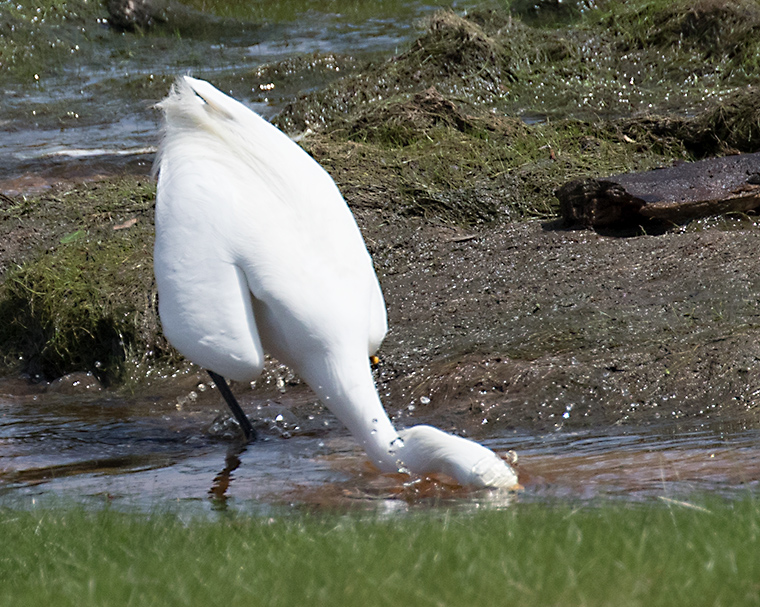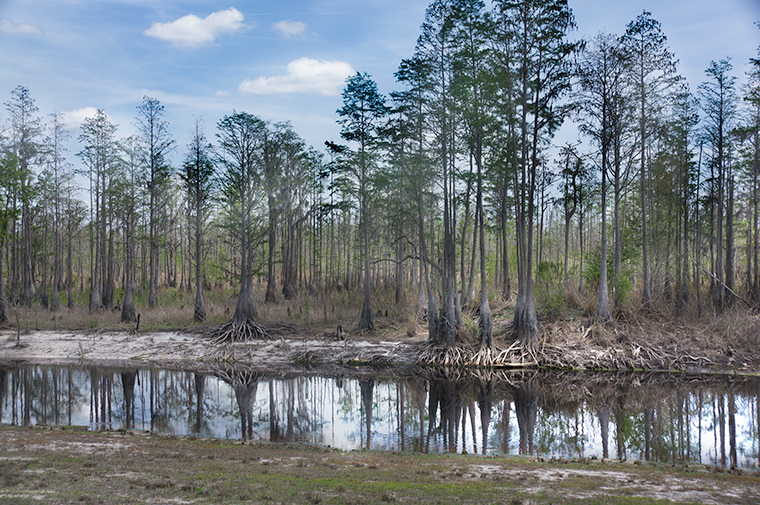 Last month we took a trip to the Okefenokee Swamp. We stayed on the West side of the swamp in Fargo, GA. Our primary goals were to see the stars and to listen for and record frog calls. However, there is always something to look at in the Okefenokee. The photograph above was taken from a man-made feature called the “Sill”. This is a long earthen dam that was constructed in the 1960’s to help regulate water levels in the swamp. It has (or had) movable gates that could be opened or closed as needed. The project was deemed a failure and the gates are no longer operative. However, one can drive out on top of the sill and look for wildlife.
Last month we took a trip to the Okefenokee Swamp. We stayed on the West side of the swamp in Fargo, GA. Our primary goals were to see the stars and to listen for and record frog calls. However, there is always something to look at in the Okefenokee. The photograph above was taken from a man-made feature called the “Sill”. This is a long earthen dam that was constructed in the 1960’s to help regulate water levels in the swamp. It has (or had) movable gates that could be opened or closed as needed. The project was deemed a failure and the gates are no longer operative. However, one can drive out on top of the sill and look for wildlife.
Last month the water level was very low. The roots of the cypress trees that are exposed in the photograph would be submerged at “normal” water levels. The Okefenokee swamp gets almost all of its water from rain. Nearly all the streams in the swamp, such as the Suwanee and the St. Marys, flow out of the swamp. So the water level in the swamp is very dependent on rainfall levels.
At any rate the ditch between the Sill and the swamp is a good place to look for wildlife. When we were there. Snowy Egrets (Egretta thula) were patrolling the edges of the water. I suppose the low water level tends to concentrate their prey and make it easier for them to hunt.
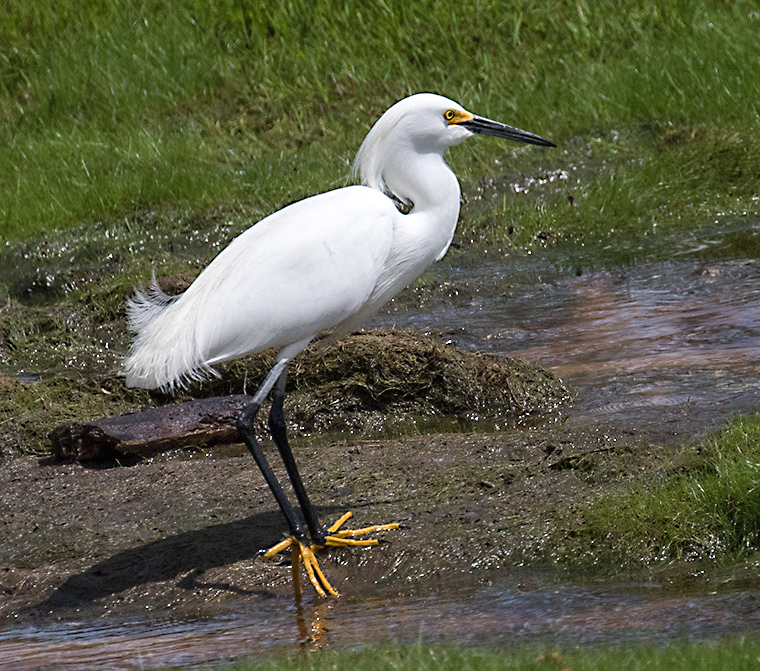 This photograph shows the main features of the Snowy Egret. They are a medium-sized type of heron, much smaller than the Great Egrets I featured a couple of posts back. Their wingspan is up to about 40 inches. The most striking feature and one that immediately identifies them is their black legs and yellow feet. The bright yellow feet may help in herding their prey along under the water.
This photograph shows the main features of the Snowy Egret. They are a medium-sized type of heron, much smaller than the Great Egrets I featured a couple of posts back. Their wingspan is up to about 40 inches. The most striking feature and one that immediately identifies them is their black legs and yellow feet. The bright yellow feet may help in herding their prey along under the water.
In the breeding season Snowy Egrets grow long, feathery plumes on their head, neck, and back. There is an excellent article about Snowy Egrets at https://www.allaboutbirds.org/. According to this article these plumes brought $32 an ounce (twice the price of gold) in 1886 for use in the fashion industry. No wonder this species was almost hunted to extinction. We are all fortunate that laws were passed to protect them.
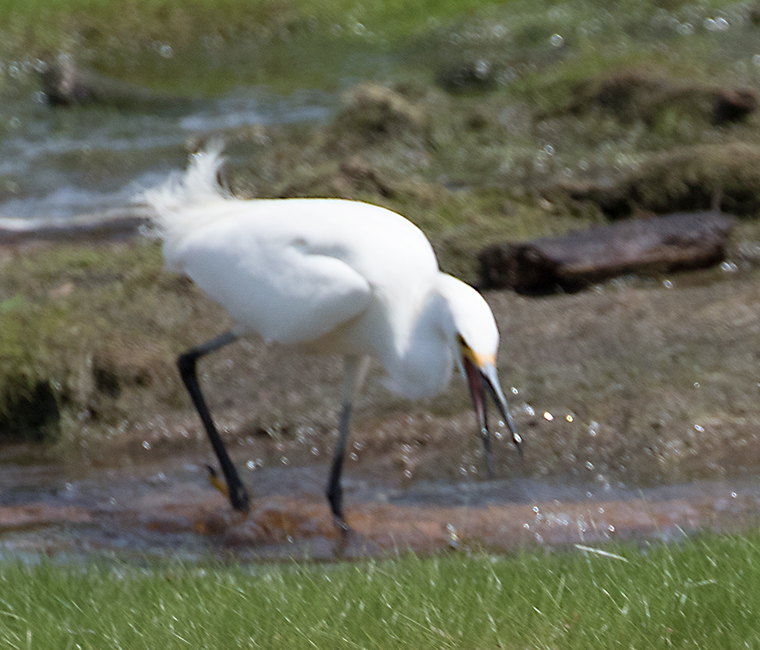 The egrets were actively pursuing their prey and it was fun to watch them. Here is one that has spotted something and is in pursuit.
The egrets were actively pursuing their prey and it was fun to watch them. Here is one that has spotted something and is in pursuit.
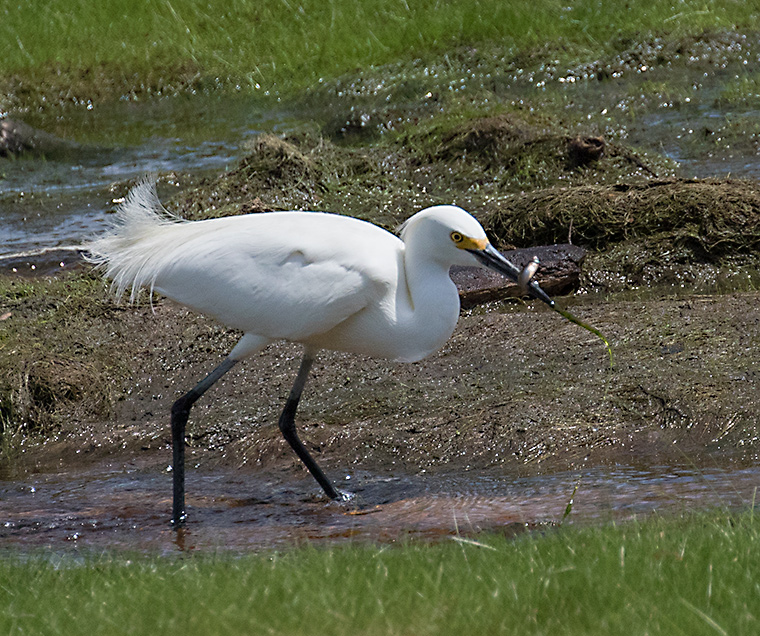 And it got one! In this case a small fish.
And it got one! In this case a small fish.
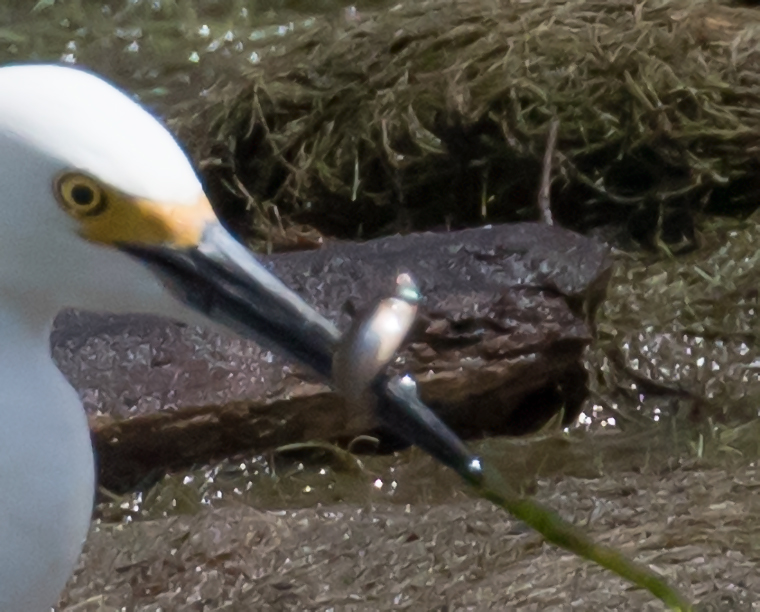 An enlargement of the previous photograph showing the fish in the egret’s beak. Notice that the egret got a mass of green algae on the end of its beak in addition to the fish.
An enlargement of the previous photograph showing the fish in the egret’s beak. Notice that the egret got a mass of green algae on the end of its beak in addition to the fish.
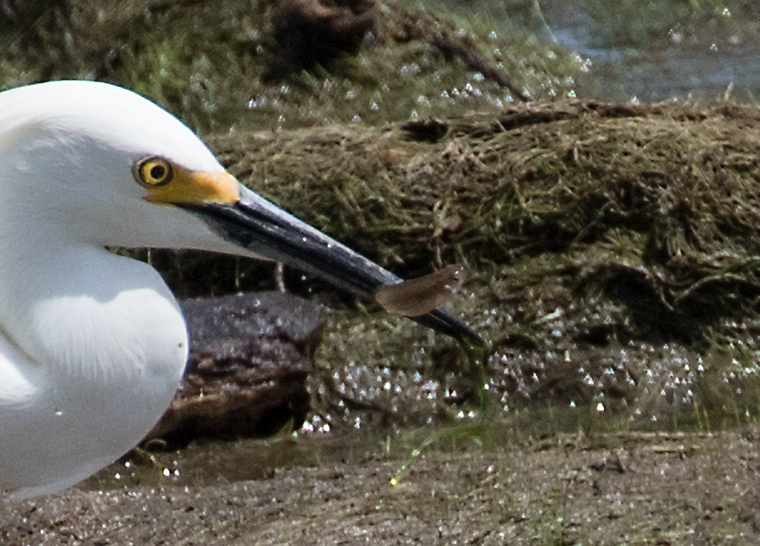 Another picture of the fish in the egret’s beak. Shortly after this photograph was taken, the egret swallowed the fish and continued on its way.
Another picture of the fish in the egret’s beak. Shortly after this photograph was taken, the egret swallowed the fish and continued on its way.

